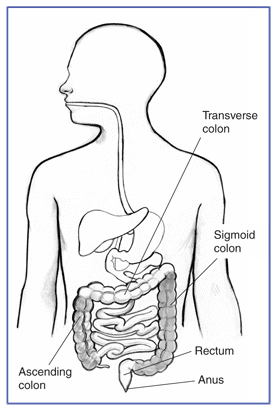A flexible sigmoidoscopy uses a thin tube to examine and evaluate the sigmoid colon and rectum. The instrument has its own lens and light source.
The sigmoidoscopy is different from a colonoscopy in that, it only allows the physician to see the sigmoid colon (lower one-third). This exam can detect inflamed tissue, ulcers and other abnormal growths. The preparation for this exam, usually requires a laxative and fleet enemas. A colonoscopy remains the “gold standard” for colon cancer screening.

 The doctor will give you instructions to use one or two enemas about 2 hours before the procedure. This will remove all solids from the lower (sigmoid) colon. The enemas may contain a mild soap solution or laxative. Sometimes, the doctor will want you to completely empty the gastrointestinal tract. This would be accomplished with a clear diet for 1 day prior to the exam and in some cases, a laxative may also be ordered. You should also avoid red or purple dye beverages. Liquid diet can include:
The doctor will give you instructions to use one or two enemas about 2 hours before the procedure. This will remove all solids from the lower (sigmoid) colon. The enemas may contain a mild soap solution or laxative. Sometimes, the doctor will want you to completely empty the gastrointestinal tract. This would be accomplished with a clear diet for 1 day prior to the exam and in some cases, a laxative may also be ordered. You should also avoid red or purple dye beverages. Liquid diet can include: